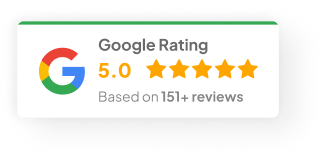13 Feb 25
Which of the Following is Not a Way that Malicious Code Can Spread?
You know, most web designers spend their time obsessing over making things look sharp and work smooth. Totally fair. But too many forget one very real danger sitting quietly in the background—malicious code. It can slip in quietly, latch onto weak spots, and before you know it, your beautiful site turns into a nightmare. I’ve seen it happen more than once over my 20 years.
Let’s break down how this stuff actually gets in, where you need to keep your eyes open, and which things don’t really pose a threat.
What Exactly Is Malicious Code?
Alright, let’s not overcomplicate it.
Malicious code is any bit of sneaky software built to cause trouble. Sometimes it steals data. Sometimes it crashes your site. Sometimes it opens a backdoor so someone else can waltz in and take control like they own the place. Over the years, I’ve dealt with plenty of versions, but most of them fall into a few buckets:
-
Viruses — they replicate, mess with your files, and can bring down a server.
-
Worms — like viruses, but they spread across networks without needing a host file.
-
Trojans — pretend to be legit files but open the door for attackers.
-
Spyware — sits quietly and steals user data behind the scenes.
If you’ve got a website with any kind of traffic or user interaction, you’re a potential target. And once it happens? Your credibility tanks, users leave, and sometimes you’re looking at expensive fixes.
How Malicious Code Actually Spreads
1) File Upload Vulnerabilities
Anytime your site allows users to upload files—profile pictures, forms, resumes—you open a door. If you don’t lock that door properly, attackers can sneak in files loaded with hidden code.
I still remember a client back in 2018 who let people upload PDFs for job applications. Simple enough. But they didn’t validate file types. Someone slipped in a PHP shell disguised as a PDF. Boom—the attacker gained access to the entire backend.
The fix?
-
Strict file type checks.
-
Server-side validation.
-
Antivirus scanning on upload.
2) Dodgy Third-Party Plugins
Plugins make life easier. But man, they’re also risky.
If you’re pulling in third-party plugins—especially free ones from developers you’ve never heard of—you might be importing vulnerabilities. An outdated plugin is like an open window for hackers.
Some of the attacks I’ve seen via plugins include:
-
Cross-site scripting (XSS)
-
Data breaches
-
Malware installs
Pro tip:
-
Only use plugins from reputable developers.
-
Keep them updated.
-
Delete anything you’re not actively using.
3) Phishing & Social Engineering
Not all attacks are technical. Sometimes hackers just trick people.
A common one is spoofing your site with fake login forms. Looks identical to your real one. User logs in? Credentials go straight to the attacker. I’ve had clients where customer service teams were getting fake “admin reset” emails asking for passwords.
Your job?
-
Secure your forms.
-
Train your team.
-
Educate your users.
4) Cross-Site Scripting (XSS)
This one’s nasty and surprisingly common.
Attackers inject code into fields on your site—comments, search bars, etc.—and that code executes when other users load the page. Suddenly, they’re stealing session tokens, cookies, and sensitive data.
Biggest defense:
-
Sanitize every single piece of user input.
-
Escape output before displaying it.
-
Use proper HTTP headers.
5) Malicious URL Redirection
This one kills trust fast.
A hacker injects redirect scripts into your site. Your user clicks a link, and instead of staying on your domain, they get sent off to some dodgy phishing site or malware installer. And usually, you won’t know until someone emails you saying, “Hey, your site just tried to download something sketchy.”
Solution:
-
Monitor redirects.
-
Scan your codebase.
-
Lock down admin access.
What Doesn’t Spread Malicious Code
Alright, now let’s clear something up. Not everything on your site is a threat.
1) Well-Coded HTML & CSS
HTML is markup. CSS is styling. Neither one can execute code by itself.
I’ve heard some clients freak out thinking their layout or font files were infected. Look, unless you’ve got some JavaScript or third-party scripts mixed in, your core HTML and CSS aren’t going to run malicious code.
Of course, if you embed bad JavaScript inside your HTML—different story. But pure markup? Safe.
2) Static Content
Static stuff like:
-
Images
-
Plain text
-
PDFs (assuming no embedded macros)
These don’t execute code when a browser loads them. Sure, you should always source your static assets from trusted places. But compared to dynamic content or executable files, these are pretty low-risk.
Smart Ways To Keep Your Website Clean
Here’s my short list I run through with most of my clients:
-
Update your CMS, plugins, and server software religiously.
-
Sanitize every single user input field.
-
Use HTTPS—non-negotiable in 2025.
-
Install real-time security plugins. (I like Wordfence or Sucuri for WordPress sites.)
-
Monitor server logs weekly for weird activity.
-
Set strong, unique passwords. No “admin123” nonsense.
-
Teach your staff how to spot phishing emails.
Simple stuff. But you’d be shocked how many people skip half of it.
Wrap Up
Honestly, building a gorgeous site is only half the job. Keeping it safe? That’s where you earn your stripes. And when your visitors trust you, they stick around.
So tell me — have you ever had to deal with a hacked site before?


